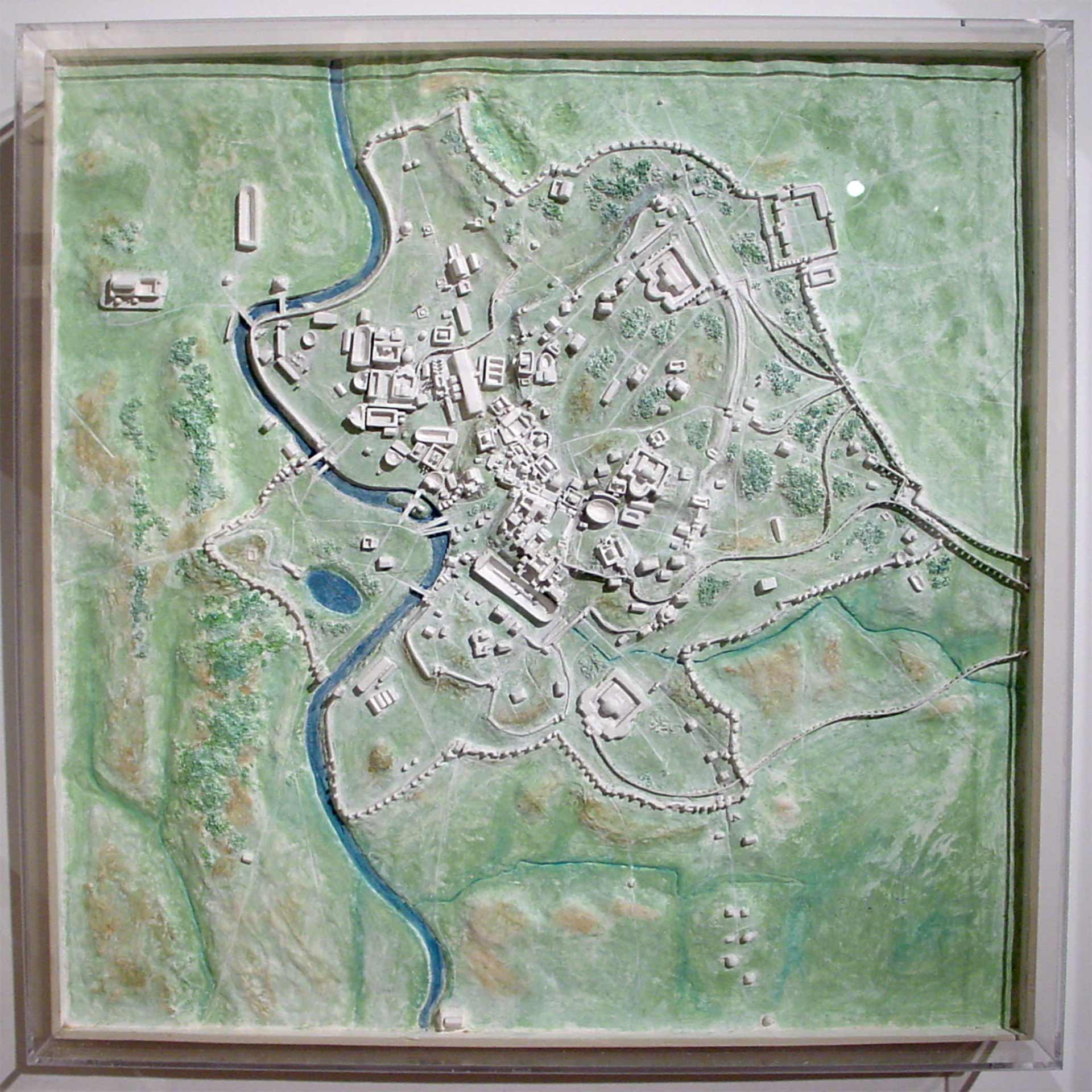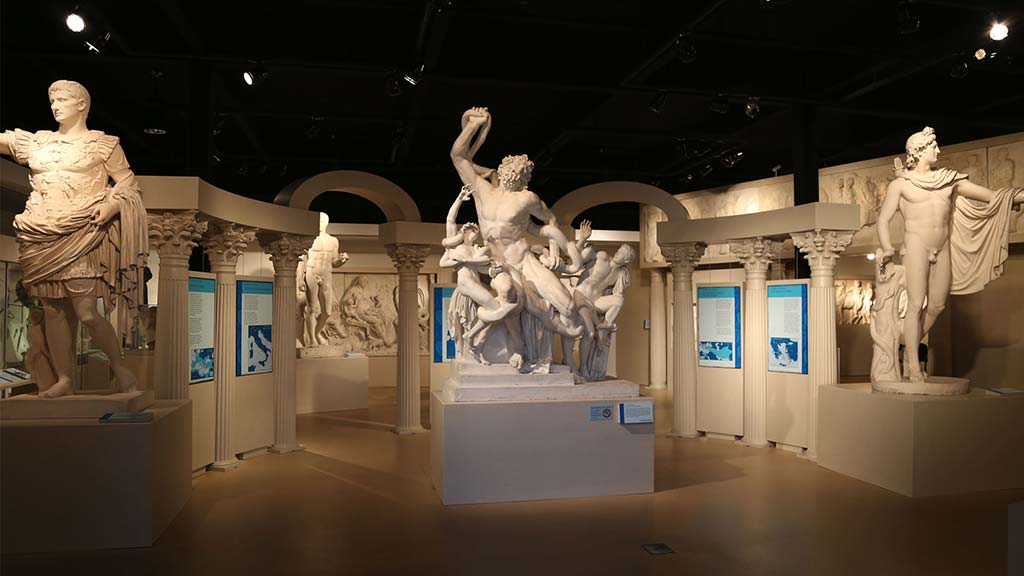
Audio Staff Pick: Plaster Cast Model: Relief of City of Rome
- Post Date: 4/20/2020
- Author: Beth Watkins, education and publications coordinator
- Reading Time: 8 minute read
Education & Publications Coordinator Beth Watkins shares one of her favorite objects in the Museum—this model of the ancient city of Rome. Listen below to why she chose this object and some interesting history behind it. The audio and transcript follow a photo of the object from the Dawn of the Individual exhibit in the Workman Gallery of Ancient Mediterranean Cultures.
Audio
Music credit: Hidden Agenda by Kevin MacLeod | License
Transcript
Hello. My name is Beth Watkins and I’m the Education and Publications Coordinator at the Spurlock Museum and I want to tell you about my favorite…well, one of my favorite objects in the museum. The one I want to tell you about today is a plaster model of a hodgepodge of years of architecture in Rome, circa 1st century to 4th century Common Era. This is not an accurate map or model. It is a sort of conglomeration of what appear to me to be ancient Rome’s biggest hits of architecture without any of the, you know, small-scale daily life kinds of buildings and structures like shops and houses. But what it does show you at a fairly easy-to-see scale is the major monuments that you know about, like the Colosseum and the Circus Maximus. It shows you the walls of the city and it shows you aqueducts coming in from the various parts of the empire that brought fresh water constantly to the city of Rome. What I like about this model is that because it doesn’t adhere strictly to a precise moment in time, it gives you a better sense of sweep, of the time that passed over these buildings and that continues to pass over them today because many of them of course are still standing and you can see them if you visit. And you can see them in, um, much more accurate, much more extensive models of the ancient city that exist in, um, other museums around the world.
You can really see the scale of these buildings and think about what this culture accomplished in terms of the creativity of architecture and pragmatism of architecture and engineering that the Romans were so known for.
I’m recording this from my house during stay-at-home orders, so I don’t have access to all of our files about this piece. And it appears from what I can access digitally that we don’t actually have much information about it. But what I did discover is that it was made by a company in Washington DC that was started by a geologist named Edwin Howell who became famous for creating geological models, very much like this one but focusing on, you know, rivers, mountains, things like that. And you’ve probably seen some of his work, or the work of similar makers, when you visit big natural history museums. And I’m pretty sure the U of I natural history museum that closed in the late 1990s either had these or had some very like it and there may even still be some in the Natural History Building.
I couldn’t find anything online really about Howell creating architectural or archaeological models, but it seems that someone in his company did. This one was purchased by one of Spurlock’s ancestor museums, the Classical Museum that was on the 4th floor of Lincoln Hall starting in 1911, they purchased this in 1913. Howell had died in 1911, so his company was still functioning a couple of years after his death, apparently, and making this FANTASTIC, in all senses of the word, model of some of the major buildings of ancient Rome.
We look forward to the day when the museum doors reopen and you can see this model in person. It’s on the wall in the Ancient Mediterranean gallery. When you enter the gallery, hang a right, and you’ll see it about 15 feet from the door. Thank you for listening. We’ll see you soon.
-
- Share:
- Subscribe to Newletter
- Giving

